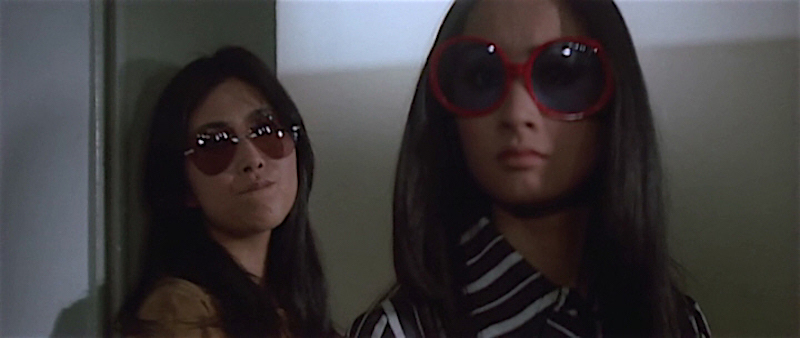Difference between revisions of "Stray Cat Rock: Girl Boss/Review"
From The Grindhouse Cinema Database
< Stray Cat Rock: Girl Boss
| Line 1: | Line 1: | ||
<center>[[File:Straycat1top.png|link=Stray Cat Rock: Girl Boss]]<center> | <center>[[File:Straycat1top.png|link=Stray Cat Rock: Girl Boss]]</center> | ||
Revision as of 19:46, 5 June 2021

Nikkatsu studios may have faced some serious financial problems and drifted to roman porno in late 1971, but for the preceding few years they kept churning out some of the hippest crime and gangster films in the world. Male super stars like Akira Kobayashi and Jo Shishido had dominated the box office, but now it was time for a more feminine approach. The five part Stray Cat Rock series set the trend for delinquent girl action films. Other studios, especially Toei with their sexed up Pinky Violence films, would soon follow Nikkatsu’s example.

The first thing to notice is that unlike many of the exploitative girl gang films of the 70’s Stray Cat Rock does not lean on sex and sleaze. Girl Boss for example contains no graphic sex or nudity whatsoever. Instead the mix is as follows; tough as nails but cute delinquent girls, fast action, fashion, motorbikes and almost non-stop good music, including on screen performances by bands such as The Mops and Andre Candre. A celluloid recording of the early 70’s rock n’ roll feel in Japan in other words.

The storyline kicks off when a new girl (Akiko Wada) rides into the town. She immediately gets in bad terms with the Seiyu gang, and makes friends with a local girl group lead by Meiko Kaji. Things get more complicated when Meiko’s boyfriend (Koji Wada) decides he wants to join the Seiyu gang. He’s given simple terms; to talk over his friend, a boxer played by Ken Sanders, to lose a boxing match. If everything goes well, he will receive a full membership and the gang will make loads money with bets. If not, he will lose his life.

Although often recalled as Meiko Kaji movies, she is not the lead actress but in the supporting cast in the first film. The real heroine is ’pop star turned actress’ Akiko Wada, who plays her role in the similar fashion as Reiko Oshida in her Toei movies. She’s not quite on par, but good enough to carry the film. Meiko and the other girls – often wearing sunglasses size of a football – give good support. Tatsuya Fuji, the future star of In The Realm of Senses, gives a good villain performance simply by looking arrogant and laughing like a madman.

Another important player that needs to be mentioned is the vehicles. These girls don’t walk, they ride a motorcycle. From the opening scenes to the last frames motorcycles are found in almost every outdoor scene. There’s enough ”girls on bike” shots to make a promotional photobook. Also worth mentioning is the red & white Daihatsu Beach Buggy that Tatsuya Fuji’s character is so crazy about. Him chasing Meiko and Akiko on the streets of Tokyo is easily one of the film’s most memorable scenes.

Girl Boss was directed by Yasuharu Hasebe, who had already been delivering Nikkatsu with several stylish action films in the late 60’s. Later in the 70’s he became know for his violent pink roughies but Stray Cat Rock remains his most remarkable achievement. Although Girl Boss isn’t as wild and technically cutting edge as some of the later films in the genre it’s a quite a thrilling piece of pop cinema. Hasebe later returned to helm two more installments, parts 3 and 4, with the remain two going to Toshiya Fujita (Lady Snowblood).
Reviewed by Hung Fist
















